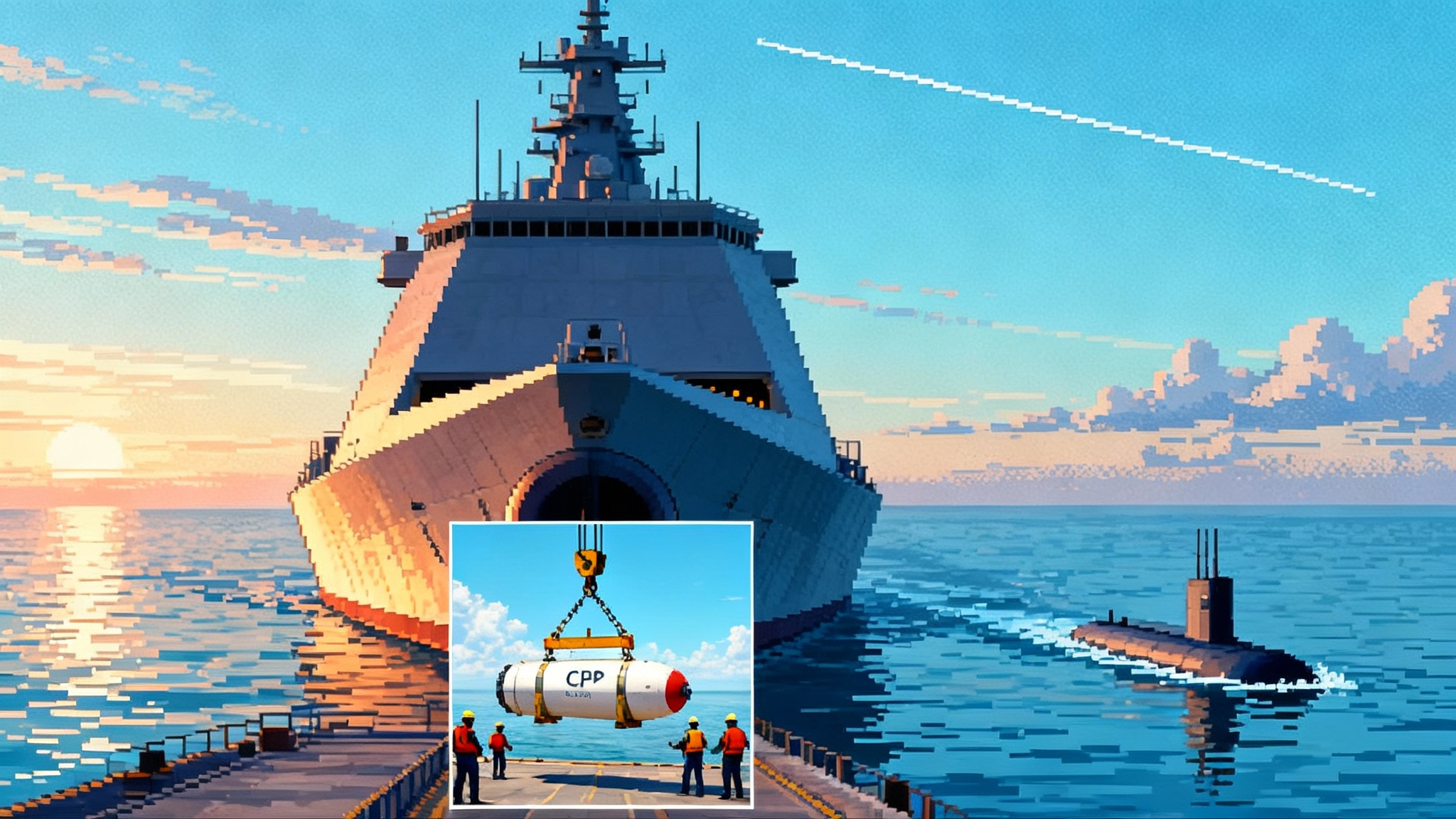NTS-3 Lifts Off, Reprogrammable GPS Enters the Fight
NTS-3 is now on orbit, opening a year of live experiments in software-defined, authenticated, spot-beam navigation. Here is how a hybrid GEO plus LEO blueprint and jam-resistant receivers could harden timing, targeting, and maneuver through 2027.

What just happened, and why it matters
At 00:56 UTC on August 13, 2025 (the evening of August 12 Eastern time), the United States Space Force launched the Navigation Technology Satellite 3, an experimental navigation spacecraft designed to stress test ideas that could reshape how the world gets position, navigation, and timing. The program is led by the Air Force Research Laboratory with L3Harris as prime for the payload, and it rode to orbit on United Launch Alliance’s Vulcan. The core news is simple and significant. A reprogrammable, software‑defined navigation satellite is finally in space, and a year of on‑orbit experiments is about to start. This is the first on‑orbit U.S. navigation experiment of this scope in nearly 50 years, and it aims to harden the most popular utility on Earth: global positioning.
If you want the official confirmation, see the L3Harris press announcement on the day of launch: Space Force launches NTS‑3. That single line changes the debate about how to defend navigation. We are no longer speculating in slide decks. We are flying code.
The threat, translated
Positioning, Navigation, and Timing, often shortened to PNT, is the bedrock service behind aircraft landings, precision farming, stock trades, cloud data centers, container ports, and artillery crews. Traditional Global Positioning System satellites broadcast very faint signals from medium Earth orbit. Those signals are precise and globally available, but they are also fragile. A cheap jammer on a hill can blind receivers for miles. A clever spoofer can feed a receiver believable but false signals. That combination is why pilots lose confidence on approach, cell towers fall back to less accurate clocks, and artillery units tighten rules of engagement. For broader context on offensive jamming trends, see Growler mid‑band offensive jamming.
NTS‑3 is meant to test answers to those problems in space, on the ground, and inside the user’s receiver. Think of it as a flying laboratory that can change its mind mid‑mission. If the threat changes, the signal can too.
The big three: software‑defined, authenticated, spot‑beam PNT
1) Software‑defined signals. Traditional navigation payloads are mostly hardwired. NTS‑3’s payload can upload new waveforms and schedules, then broadcast them within hours. Imagine if the traffic lights in a city could change not just their timing but their pattern during an emergency, and every car’s navigation app learned the new pattern instantly. The city keeps flowing instead of gridlocking. Software‑defined signals let operators adapt to jammers, optimize power, and roll out new features across a fleet without launching a new satellite.
2) Signal authentication. Receivers have long asked a hard question: is this satellite really who it says it is. NTS‑3 will test civil signal authentication techniques, including a protocol known as Chips Message Robust Authentication, often shortened to CHIMERA. Authentication is like a watermark on a banknote. The watermark does not stop someone from crumpling the note, but it makes counterfeiting much harder. When receivers can validate that a signal is genuine, they can reject fakes quickly and fuse the rest of their sensors with greater confidence. For a drone flying in contested airspace or a ship entering a narrow channel, that is a big safety difference.
3) Spot‑beam PNT with a phased array. Instead of a single blanket signal, NTS‑3 uses an electronically steerable antenna to point power where it is needed. Picture a stadium with powerful floodlights that can tilt and brighten specific sections. If a brigade is maneuvering in a jammed valley, or a disaster zone needs assured timing after a hurricane, operators can concentrate energy and new waveforms over that region. More power in a smaller area means a higher signal‑to‑noise ratio at the receiver, and therefore better resistance to jamming.
AFRL’s program page summarizes these ideas, including on‑orbit reprogramming, phased array beams, and authentication experiments. For a technical primer, see the AFRL NTS‑3 technical overview.
The new blueprint: hybrid GEO and LEO, not just MEO
NTS‑3 is flying in geostationary orbit, far above the equator. Classic Global Positioning System satellites sit in medium Earth orbit. Several commercial firms are building or proposing low Earth orbit PNT constellations. Put those layers together and you get a multi‑layer architecture that behaves more like a resilient network than a single utility. This dovetails with broader space resilience efforts highlighted in America’s space shield taking shape.
Here is how the layers complement each other.
- Medium Earth orbit provides global coverage, mature signals, and well‑understood geometry. It is the reliable base.
- Geostationary orbit can deliver regional power and new waveforms on demand. It acts like a theater commander for navigation, adjusting tactics for local conditions without changing the entire constellation.
- Low Earth orbit brings geometry diversity and stronger signals at the surface because satellites are much closer. Signals from low Earth orbit arrive from many directions, move across the sky quickly, and are harder to jam everywhere at once. Dedicated low Earth orbit PNT companies, such as Xona Space Systems, are designing encrypted, high‑rate signals for precise navigation, while providers like Satelles use communications constellations to deliver timing to indoor sites.
Tie these layers together with cross‑links and common authentication, and you get what operators increasingly call GPS 2.0. That is not a rebrand. It is a shift from a single layer, single set of signals, to a family of interoperable services that receivers can blend in real time.
What this means for receivers through 2027
Receivers are where resilience becomes real. A truck on a highway or a battery of long‑range rockets does not care about orbital altitude. It cares about whether the receiver locks quickly and stays locked under pressure. Between now and the end of 2027, watch for five practical changes.
-
Software‑defined radio as the default. Military GPS User Equipment programs already field modernized modules. The next step is wider use of software‑defined radios that can ingest new NTS‑3 style waveforms via secure updates, not depot rework. Vendors should expose clear software interfaces for waveform plugins, and buyers should require over‑the‑air update capability with cryptographic attestation.
-
Built‑in authentication checks. Expect receivers to support authentication flags in their position solutions. That enables rules of engagement like: accept only authenticated signals for targeting, fall back to inertial navigation when authentication fails, and alert operators when unauthenticated use would degrade safety.
-
Affordable anti‑jam antennas. Controlled reception pattern antennas, often called CRPAs, used to be boutique. Prices are dropping as phased array components go commercial. By 2027, expect more small platforms to ship with two‑ to four‑element antennas, enough to shrug off common jammers. Programs should treat the antenna and the radio as one survivability subsystem, not separate boxes bought years apart.
-
Multi‑layer fusion by default. Receivers will blend Global Positioning System, Galileo, BeiDou, and future authenticated civil signals plus low Earth orbit PNT where available. The winning user equipment will not be the most exotic. It will be the one that smoothly fuses signals, inertial sensors, barometers, and vision aids, and that can be set up by a sergeant in ten minutes.
-
Faster time to first fix after disruption. Reacquisition speed matters as much as raw accuracy. Expect firmware updates that prioritize recovery after jamming, including snapshot techniques that store partial signal states for rapid re‑lock when the interference stops.
Timing is a weapon system too
Every cell tower, financial exchange, and missile battery relies on exact time. NTS‑3’s clock experiments test ways to keep time stable even if contact with the ground is delayed, and to distribute authenticated time with spot beams when a region is under stress. That has three near‑term consequences.
- Telecom networks can keep better phase lock when satellite timing is degraded, which means fewer dropped calls and more stable 5G edge nodes during regional disruptions.
- Data centers and exchanges can validate time with authentication tags, which allows stricter audit trails and reduces the risk of time spoofing attacks on transaction systems.
- Artillery and long‑range fires units can maintain alignment of inertial navigation systems during moves, so when the shooting starts, weapons are already within the guidance envelope and require fewer corrections in flight.
Long‑range fires, 2025 to 2027
Precision fires live or die by circular error probable. Jamming and spoofing increase error and slow decision cycles. NTS‑3 enables a different playbook, complementary to the strike modernization discussed in Mach 5 on Wheels HIMARS roadmap.
-
Regional overmatch. In future exercises, a theater commander can request an authenticated, high‑power spot beam over a corridor where long‑range fires will concentrate for 48 hours. Receivers in that corridor pre‑load the waveform schedule. When the window opens, they lock faster, resist jammers, and feed targeting systems higher confidence solutions. That shortens the find‑fix‑finish loop.
-
Target handoff with confidence. If a reconnaissance drone and a ground radar are both riding authenticated signals, their coordinates agree more often and with less operator arbitration. That reduces the human steps between detection and launch.
-
Better fallback chains. When a battery rolls into an area with intermittent jamming, modernized receivers can drop to inertial and low Earth orbit PNT for short periods, then rejoin spot‑beam service when the jammer moves. The result is continuity, not brittleness.
By the end of 2027, expect operational units to have thousands of authenticated, multi‑band receivers with small CRPA antennas, paired with updated mission planning software that knows when and where to expect waveform changes. This is not a silver bullet. It is a tight loop between space, ground, and user that raises the adversary’s cost.
What needs to happen next
The launch starts the experiment. To turn it into a capability, three lines of effort should accelerate in parallel.
-
Lock in a hybrid GEO and LEO architecture. Space Systems Command and AFRL should define a minimal viable multi‑layer PNT service. A practical baseline is one or two geostationary augmentation satellites with steerable beams, plus a small set of low Earth orbit satellites that broadcast authenticated signals and time transfer. Publish the interface control documents for authentication and waveform negotiation so that allied vendors can build compatible receivers. Use multi‑year acquisition to hold costs.
-
Push jam‑resistant user equipment to the edge. Field rapid prototype kits to aviation, maritime, and ground units in tranches every six months. Each tranche should include a software‑defined radio with secure update, a compact two‑ to four‑element anti‑jam antenna, and a configuration tool that runs on standard laptops. Train maintainers to deploy authentication keys the way they deploy crypto for radios.
-
Measure what matters, then iterate. Create joint test events where units must fight through live jamming and spoofing. Score not just position accuracy but time to first authenticated fix, reacquisition time after interruption, and user burden to reconfigure. Treat those as key performance parameters. If an update improves reacquisition by 40 percent, ship it within weeks, not years.
What about civilian users
Most of the world’s navigation happens far from a battlefield, yet it faces similar problems. Cargo ports, airports, and rail yards are seeing more interference incidents. A hybrid architecture and modern receivers would help them too.
-
Aviation can get authenticated approaches in challenged regions, with better performance in urban canyons. The avionics play is incremental. Start with software updates and dual‑frequency antennas on new airframes, then add authentication features as standards mature.
-
Critical infrastructure can buy time resiliency. Power grids and telecom networks can adopt receivers that cross‑check satellite time with fiber‑delivered time and low Earth orbit signals inside buildings. If satellite timing drops, clocks stay inside tolerance while operators diagnose.
-
Automotive and autonomy stacks can fuse authenticated signals with inertial and vision, which reduces rare but dangerous off‑the‑rails errors in tunnels or near reflective buildings.
These are not speculative benefits. They are the spillovers when a national security experiment deliberately publishes open interfaces and keeps the user in the loop.
The competitive landscape, clearly named
There are real companies at the center of this transition. L3Harris built the NTS‑3 payload and mission software. Northrop Grumman supplied the ESPAStar‑D bus. United Launch Alliance launched the satellite. On the receiver side, a mix of primes and startups are shipping multi‑band, software‑defined receivers suitable for authentication and low Earth orbit signals. In low Earth orbit PNT, Xona Space Systems is building a dedicated constellation for navigation signals, while Satelles provides timing services based on Iridium. These players are not exclusive choices. They are the ingredients of a layered service that must work together by design.
A realistic timeline
-
Now through mid‑2026. NTS‑3 executes on‑orbit experiments. Expect early demonstrations of beam steering, waveform agility, and civil signal authentication in selected regions. User equipment vendors issue firmware updates to participate.
-
Late 2026. Operational test events where authenticated, spot‑beam signals support exercises with live jamming. Data informs whether a follow‑on geostationary augmentation becomes a program of record.
-
2027. Tranche fielding of jam‑resistant receivers accelerates. Early low Earth orbit PNT services reach initial operational capability in limited theaters. The first true hybrid GPS 2.0 pilot area goes live, blending medium Earth orbit, geostationary orbit, and low Earth orbit signals with common authentication.
That is an ambitious but achievable path, and it is the right scale to matter in a fight rather than in a lab.
The bottom line
The old bargain in satellite navigation was global reach in exchange for signal fragility. NTS‑3 breaks that bargain by proving that signals can be updated like software, validated like currency, and concentrated like a spotlight. Pair that with low Earth orbit diversity and modern receivers, and you get a navigation service that does not blink when someone shines a light in its eyes.
The next move belongs to acquisition leaders and unit commanders. Fund a minimum viable hybrid architecture, force interoperability through published interfaces, and push jam‑resistant user equipment to the edge. If the experiments in 2025 and 2026 drive those decisions, then by 2027 commanders will have a navigation system that bends without breaking, and adversaries will discover that jamming the sky is no longer a cheap trick.








